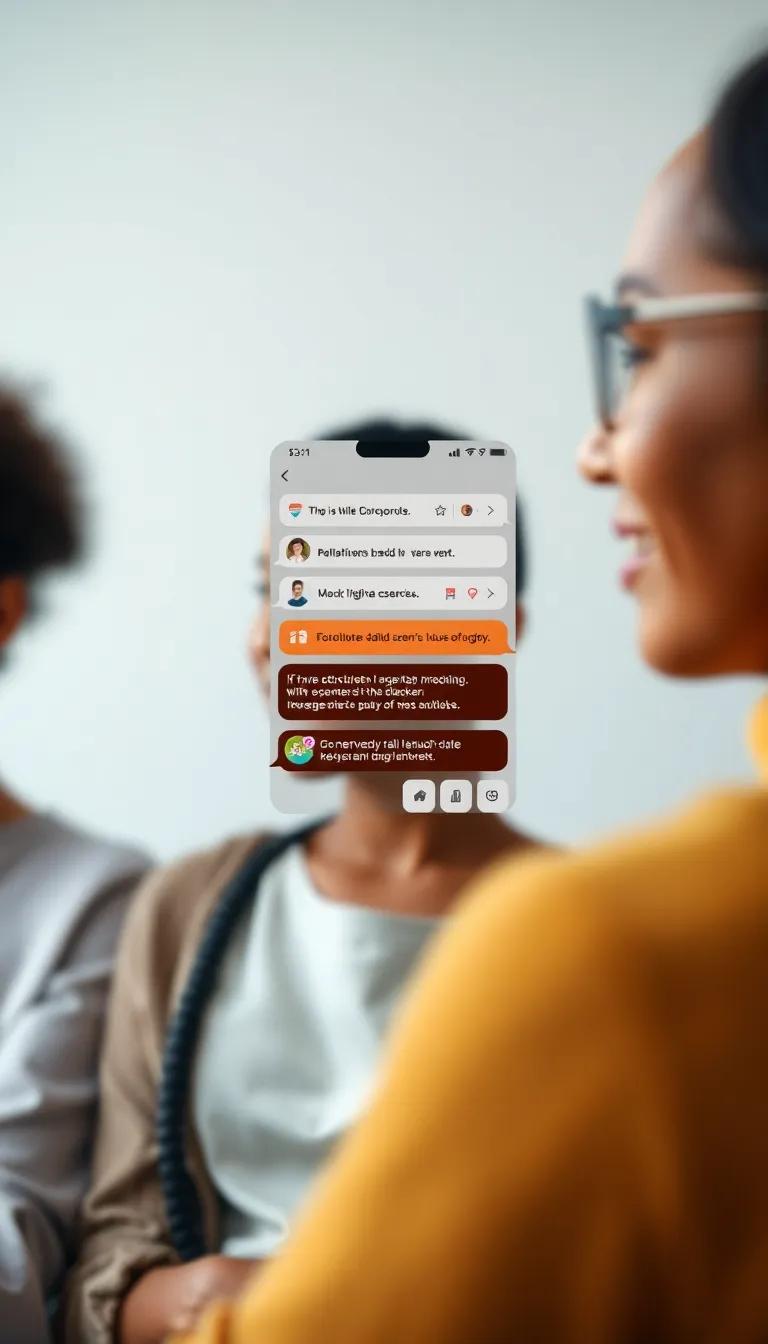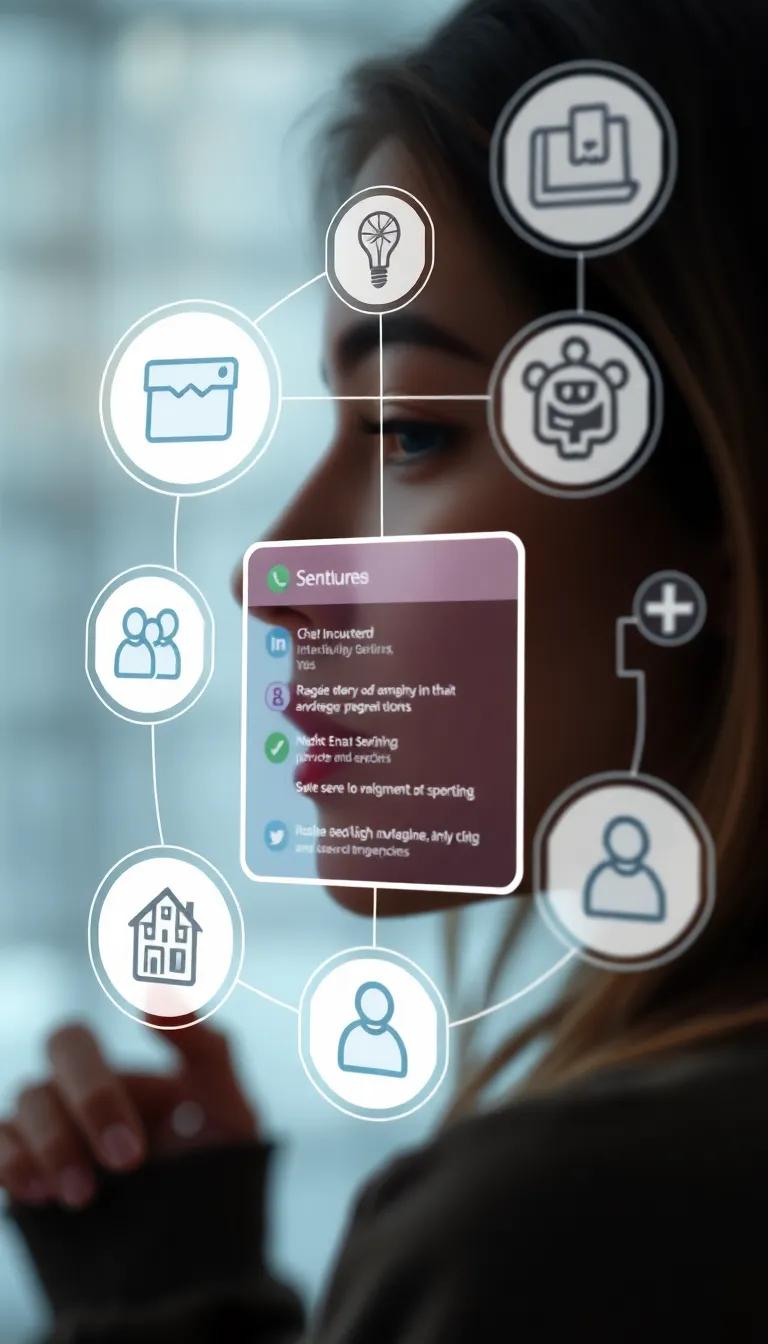Introduction
In today’s digital landscape, establishing meaningful connections through chat engagement is essential for enhancing website conversations. Visitors increasingly seek instant interactions and responses, making chat engagement strategies a vital component of customer service and user experience. This article delves into the variety of approaches that can be deployed to foster engaging conversations on your website, ensuring that users feel heard and valued. From implementing chatbots to optimizing response times, these strategies aim to transform visitor interactions into positive experiences that build trust and loyalty.
Beyond just quick replies, the finesse of chat engagement lies in understanding user needs and adapting communication styles accordingly. Utilizing feedback and analytics can significantly enhance engagement, tailoring interactions to meet evolving customer expectations. In the chapters that follow, we will explore concrete strategies for improving website conversations, optimizing the chat interface, and effectively measuring engagement results. Join us as we navigate the nuances of chat engagement and discover how these methods can create a lasting impact on your audience.
Understanding the Importance of Chat Engagement
Chat engagement serves as a pivotal element in the realm of online communication, shaping user experiences and enhancing overall customer satisfaction. As businesses increasingly rely on digital platforms, the effectiveness of chat interactions has become paramount. A well-executed chat strategy not only addresses user queries but also fosters an environment that encourages dialogue. When users feel connected, they are more likely to engage with the content and services offered, leading to improved outcomes for both parties.
The immediate benefits of effective chat engagement are evident through metrics such as chat duration, user satisfaction ratings, and conversion rates. A positive interaction leaves users feeling valued and heard, which can significantly bolster brand loyalty. Conversely, a lackluster chat experience may frustrate users, leading to higher abandonment rates and negative brand perceptions. This highlights the need for businesses to prioritize engagement tactics that resonate with their audience.
Chat can be a great way for companies to get useful info. When they look at the questions and feedback from chat conversations, businesses can really understand what their customers want and need. This kind of information helps tweak products or services and can even spark ideas for more personalized marketing. It makes the whole experience better for users from the first chat until everything’s wrapped up.
As users increasingly seek instant gratification, the expectations surrounding chat engagement will continue to evolve. Emphasizing prompt responses and relevant content can make a significant difference. For instance, integrating AI-driven chatbots that provide immediate assistance or routing inquiries to appropriate human operators ensures that users receive timely and effective support. Such practices not only enhance the communication experience but also streamline operational efficiency.
Chat engagement isn’t just an add-on to online chats; it’s really important for keeping users happy and helping your brand succeed. Companies that work on improving chat interactions can build stronger connections with their customers, leading to a lively and engaging online presence that fits what today’s users are looking for.
Crafting a Seamless Chat Experience Key Components of an Effective Chat Interface
Creating a chat interface that fosters user participation requires a meticulous approach to design, functionality, and user experience. A successful chat engagement strategy hinges on the integration of several core components that collectively enhance the overall experience for visitors on a website.
Focus on User-Centric Design
At the heart of any effective chat interface is user-centric design. This means prioritizing the needs and preferences of the users throughout the design process. An intuitive layout is essential so that users can easily navigate through the chat without facing overwhelming complexity. Key design elements, such as clear call-to-action buttons and straightforward text fields, should be easily accessible, allowing users to initiate and continue conversations with minimal friction.
Incorporating an adaptive design also ensures compatibility across various devices, whether a user is on a desktop, tablet, or smartphone. This responsiveness enhances accessibility and guarantees that users can engage in conversation regardless of their device, ultimately increasing participation rates.
Streamlined Functionality Engaging Conversations
Another fundamental aspect is the functionality of the chat tool. Real-time messaging capabilities must be unobtrusive yet effective, allowing for smooth interactions. Including features such as typing indicators, which show when the representative is responding, can provide reassurance to users that their inquiries are being addressed promptly.
Offering options for users to select specific topics or categorize their queries can further streamline interactions. A menu of frequently asked questions or a selection of areas of assistance can guide users more effectively, ensuring they receive relevant information without unnecessary back-and-forth.
Visual elements also play a crucial role in enhancing engagement. Incorporating personalized avatars or chat bubbles that differentiate between users and representatives can create a more relatable and humanized experience. Employing emojis or GIFs sparingly can also lighten the tone of conversations, making the chat feel more approachable and enjoyable.
Encouraging Participation Through Gamification
Applying gamification strategies can significantly boost user participation. Simple incentives, such as rewards for engagement or highlighting user contributions, can encourage users to interact more actively. Integrating elements like progress bars can incentivize users to complete conversations or challenges within the chat, fostering a sense of achievement and motivation to continue engaging.
By focusing on user-centric design, streamlined functionality, and innovative engagement strategies, organizations can create a seamless chat experience that not only improves website conversations but also significantly enhances overall user satisfaction.
Incorporating Chatbots for Enhanced User Engagement
Streamlining Communication with Chatbots
In the world of online communication, chatbots are super helpful for keeping users engaged on websites. These automated helpers are designed to tackle incoming questions and give quick answers, which helps avoid the annoyance of waiting around. By adding chatbots to your website, businesses can create smooth conversations, making sure users get the info they need right when they need it.
The design of chatbots focuses on creating a user-centric experience. They are equipped with artificial intelligence capabilities that allow them to understand and respond appropriately to a variety of user inquiries. This immediate access to information not only satisfies user curiosity but also promotes positive interactions, fostering a sense of engagement that standard communication methods may not achieve. For example, when a visitor asks about product features, a well-programmed chatbot can provide detailed descriptions instantly, removing potential obstacles in the user journey.
Providing Immediate Responses to User Queries
One of the standout advantages of chatbots is their ability to operate 24/7, ensuring that users can engage with your service at any time. This constant availability means that potential customers can receive assistance outside of traditional business hours, catering to a global audience. Users appreciate the convenience of having immediate solutions to their problems, which significantly enhances user satisfaction and trust in the brand.
Chatbots are great because they can talk to a bunch of customers at once, making them super handy for businesses that get a lot of inquiries. This is really useful during busy times or special sales when questions ramp up. By handling common questions or helping customers with their purchases, chatbots take some of the pressure off customer service teams. This lets human agents spend their time on trickier problems that need a personal touch.
To maximize the effectiveness of chatbots, it’s critical to continually refine their algorithms based on user interactions. Analyzing the types of questions posed and the response effectiveness can provide insights into areas for improvement. Such iterative processes ensure that chatbots remain aligned with user needs and expectations, further enhancing engagement capabilities while creating a more dynamic and responsive online experience.
Utilizing Analytics to Gauge Chat Effectiveness
Tracking Chat Interactions to Enhance Engagement
In the quest to improve website conversations, monitoring chat interactions through analytical tools becomes paramount. The insights gained from data analysis are invaluable for understanding user behavior, preferences, and pain points. By leveraging tools such as Google Analytics, organizations can track metrics like chat initiation rates, average response time, and user satisfaction ratings. These metrics help identify trends and patterns, revealing which times of day or specific pages lead to higher engagement rates.
One effective approach involves setting up conversion tracking to measure the impact of chat interactions on overall business goals. For instance, analyzing how often chat interactions lead to completed purchases or inquiries can provide a clear picture of the chat’s effectiveness. In combination with session replay tools, businesses can visualize the customer journey, pinpointing where engagement both flourishes and falters.
Analyzing Chat Data for User Satisfaction
Beyond just interaction rates, examining qualitative feedback gathered through chat can significantly enhance user satisfaction. Implementing post-chat surveys allows companies to gather direct feedback about user experiences. Questions can cover aspects like the helpfulness of responses or the friendliness of the chat agent. By consistently monitoring this feedback, organizations gain actionable insights into customers’ sentiments and expectations.
Using sentiment analysis software can provide a more comprehensive understanding of user emotions during chat interactions. This method analyzes the tone and vocabulary used in customer inquiries, allowing brands to adjust their chat strategies accordingly. By identifying common negative sentiments, organizations can refine their responses or adjust their chat interfaces to enhance positive experiences.
Integrating analytics with chat management systems also enables businesses to segment data for more targeted strategies. For example, analyzing chat interactions by user demographics can reveal distinct trends among different audience segments. This information can inform adjustments in script language and overall engagement tactics, ensuring that communication styles align with varying user preferences.
If businesses pay close attention to tracking and analyzing chat interactions, they can keep improving how they engage with customers in chats. This not only boosts user satisfaction right away but also helps build long-lasting loyalty and trust in the brand.
Tailoring Communication Styles for Diverse Audiences
Understanding Personalized Communication in Chat Engagement
The effectiveness of chat engagement significantly hinges on the ability to tailor communication styles that resonate with distinct user demographics. Personalized communication creates a unique experience for each visitor, enhancing engagement and improving interaction quality. Various factors, such as age, cultural background, location, and even technological proficiency, play crucial roles in shaping how users prefer to communicate. For instance, younger audiences might appreciate a more casual tone, while older visitors may favor a more formal approach. Understanding these nuances is vital for businesses aiming to maximize the impact of their chat interactions.
Utilizing data analytics to segment users based on demographic information enables the formulation of targeted communication strategies. By assessing previous engagement metrics and user profiles, businesses can craft messages that align with the interests and preferences of specific user groups. This level of customization fosters a sense of relevance, making users feel valued and encouraging them to participate actively in conversations. Tailoring chatbots or chat protocols for different customer segments not only boosts engagement but also fortifies brand loyalty.
Strategies for Adapting Communication Styles
There are several effective strategies to ensure that communication styles are adapted thoughtfully:
- User Segmentation: Divide visitors into segments based on criteria like age, geographic location, and browsing behavior. This segmentation can inform tailored messages that meet different expectations and cultural contexts.
- Language Preference: Offer multilingual support in chat interactions. This ensures that users can communicate in their preferred language, reducing barriers and enhancing user comfort.
- Tone and Formality Adjustment: Adjust the tone of communication to match the target audience. A professional tone may resonate better with corporate clients, while a friendly, casual style may appeal to younger consumers.
- Interactive Elements: Incorporate various interactive features, like quick replies or emoji, based on the audience’s communication style. This encourages more vibrant engagement and helps to maintain a lively conversation.
Adapting communication styles to match diverse user demographics is a powerful way to enhance chat engagement. As users increasingly expect personalized experiences, businesses must be agile and responsive in their communication strategies. By embracing these tailored approaches, organizations can foster deeper interactions, ultimately leading to improved online conversations and elevated customer satisfaction.
Training Staff for Effective Chat Management
In any successful online interaction strategy, the role of customer service representatives is paramount. These individuals are the front line of engagement, tasked with guiding conversations and building rapport with website visitors. Training staff in effective chat management techniques is not just beneficial; it is a necessity for enhancing overall engagement and conversation quality.
Significance of Comprehensive Training
Effective chat management is an art that combines communication skills, product knowledge, and the ability to quickly assess and address customer needs. Comprehensive training ensures that customer service representatives are consistently aligned with the company’s objectives and communication style. This alignment is especially significant when recognizing the diverse user demographics that a website may attract. Representatives equipped with proper training are better able to adapt their tone, style, and responses based on the unique profiles of their chat participants, much like the previous focus on tailoring communication styles.
Training programs should cover essential skills, including:
- Active Listening: Understanding customer concerns requires more than just responding; it demands absorbing information and discerning underlying issues.
- Empathy: Representatives must express genuine care for users’ needs, enhancing the emotional connection and leaving a positive impression.
- Product Knowledge: Being well-versed in company offerings enables staff to provide accurate advice and solve problems efficiently.
- Time Management: Teaching representatives to manage multiple chats while maintaining a high level of service is crucial for a seamless experience.
- Conflict Resolution: Training should include techniques for handling difficult situations and turning potential disputes into positive outcomes.
Evaluation and Continuous Learning
Beyond initial training, continuous evaluation is essential to maintain high engagement levels. Regular monitoring of chat interactions and gathering feedback enables businesses to identify areas where representatives can improve. Implementing periodic refresher courses ensures that staff stays updated on communication trends and new product information, keeping their skills sharp.
Letting everyone chat freely in the team helps members share their stories and ideas. This teamwork not only boosts each person’s performance but also makes the whole team better at improving website conversations.
Focusing on training your team for better chat management creates a space where real conversations can happen. When your reps get good at handling different interactions, it boosts the chances of building strong connections with users. This really helps keep the conversation going and builds customer loyalty.
Continuous Improvement of Chat Engagement Strategies
Iterating Strategies Based on Feedback
In the dynamic landscape of online interactions, the development of chat engagement strategies is not a one-time endeavor. Continuous improvement plays an integral role in enhancing website conversations. By consistently iterating on these strategies based on user feedback, organizations can better understand their audience’s needs, preferences, and pain points. This iterative process helps to fine-tune chat interactions, ensuring they resonate more effectively with users.
User feedback can be gathered through various methods, such as surveys, chat transcripts, and analyzing engagement metrics. Identifying patterns in user behavior allows businesses to discern which elements of their chat engagement strategies are effective and which may require refinement. For instance, if users frequently disengage during specific interactions, this signals a need for adjustment, prompting organizations to rethink their approach.
Adapting to Trends for Success
Evolving chat engagement strategies also entails keeping pace with industry trends and technological advancements. The digital communication landscape is subject to rapid changes, influenced by consumer preferences and emerging technologies. Organizations should regularly assess the effectiveness of their chat tools, updating them to incorporate new features that enhance user experience and facilitate smoother conversations.
One effective way to stay ahead of the curve is by analyzing competitors’ practices and consumer feedback related to their interactions. If certain features become popular or are well-received in the industry, it’s worthwhile for organizations to consider adopting similar capabilities. This kind of proactive adaptation can enhance user interaction, making chat experiences more engaging and relevant.
Engaging with users on different communication platforms enables organizations to gather diverse feedback. Social media sentiment analysis, for example, can provide valuable insights into how users perceive chat engagement, informing adjustments to strategies accordingly.
By fostering a culture of continuous improvement, businesses can create a feedback loop that not only enhances chat engagement strategies but also contributes to an overall superior customer experience. This inevitably leads to increased satisfaction, stronger brand loyalty, and ultimately, better performance in the competitive digital marketplace.
Conclusions
Chat engagement plays a pivotal role in enriching user experiences and driving customer satisfaction on websites. By deploying focused strategies, businesses can significantly enhance conversations, making them more interactive and responsive. Implementing these chat engagement methods not only improves response times and communication effectiveness but also fosters a collaborative environment where users feel comfortable seeking assistance or information.
Establishing robust chat engagement strategies is about creating valuable interactions. As visitors navigate your website, a well-executed chat approach can elevate their experiences, resulting in a loyal customer base and better conversion rates. It is essential to stay ahead by continuously refining these strategies based on user feedback and engagement metrics. This iterative process ensures that chat engagement remains effective and relevant, enhancing the overall quality of web interactions.




















